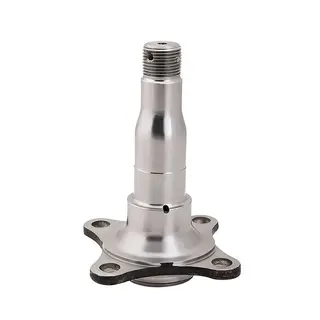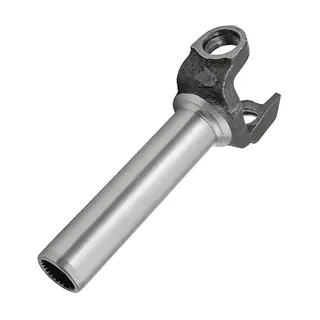In the modern metal processing industry, forging dies play an indispensable role. Forging, which collectively refers to forging and stamping, applies external force to metal billets, causing plastic deformation and thereby changing their dimensions, shapes, and properties. This is an important method for manufacturing high-performance mechanical parts and part blanks. Forging dies are the core tools in this process. They not only determine the precision and shape of parts but also directly affect production efficiency and product quality. Understanding the materials, classifications, and maintenance methods of forging dies is of great significance for improving die lifespan, optimizing production processes, and ensuring the performance of the final product.
Forging combines forging and stamping and is a forming process in which tools or dies apply impact or pressure to metal billets to induce plastic deformation, changing dimensions, shapes, and properties, and producing mechanical parts or part blanks. Forging dies utilize forging machinery to apply pressure to metal billets, causing plastic deformation to produce forgings with specific mechanical properties, shapes, and dimensions. They constitute one of the two major components of forging.
Through forging, casting porosity and welding holes in metals can be eliminated, and the mechanical properties of forgings are generally superior to castings of the same material. Forging dies are molds used during the forging process. Die steel materials undergo plastic deformation under external forces within the die to achieve the required shapes and dimensions of parts. Forging dies can be classified into hot forging dies, warm forging dies, and cold forging dies based on the operating temperature of the die steel material. High-speed steel and cemented carbide materials are often used to manufacture high-speed stamping and high-precision dies, exhibiting excellent toughness, wear resistance, and other performance characteristics.
Metal Materials: Metal materials have high hardness, making them very suitable for producing dies that require high precision. Common metal materials include cemented carbide, tool steel, special steel, and cast steel. Cast iron dies are common due to their low cost and ease of processing, and they are widely used in the manufacture of various castings and plastic products. Cast iron dies are usually made from gray cast iron, ductile iron, and other cast iron materials.
Alloy Tool Steel: Alloy tool steel is one of the more common die materials, featuring high hardness, high strength, good wear resistance, and thermal stability. It is suitable for medium-to-small batch production and products with higher requirements. Cemented carbide steel is an advanced die material, featuring high hardness, high strength, strong wear resistance, and high corrosion resistance.
Other Materials: Besides metal materials and alloy tool steel, many other materials can be used for die manufacturing, such as plastics, inorganic non-metals, and wax. These materials each have advantages and disadvantages, and their uses and demand vary depending on actual needs.
Die steels can be roughly divided into cold work die steels, hot work die steels, and plastic mold steels, used for forging, stamping, cutting, and die-casting. Because the purposes of various dies differ and working conditions are complex, die steels should possess high hardness, strength, wear resistance, sufficient toughness, as well as high hardenability, quenching ability, and other processing properties, according to the working conditions of the dies.
Cold work dies include cold stamping dies, drawing dies, deep-drawing dies, embossing dies, thread rolling dies, thread rolling plates, cold heading dies, and cold extrusion dies. The steels used for cold work dies, according to the working conditions of the dies, should have high hardness, strength, wear resistance, sufficient toughness, and high hardenability, quenching ability, and other processing properties. The alloy tool steels used for these purposes generally belong to high-carbon alloy steels, with a carbon mass fraction of over 0.80%. Chromium is an important alloying element in these steels, usually not exceeding 5% by mass. However, for dies requiring very high wear resistance and minimal deformation after quenching, the maximum chromium mass fraction can reach 13%, and to form a large amount of carbides, the carbon content is also very high, up to 2.0–2.3%. Cold work die steels generally have high carbon content, with most of their microstructure being hypereutectoid or ledeburitic steel. Common steels include high-carbon low-alloy steel, high-carbon high-chromium steel, chromium-molybdenum steel, and medium-carbon chromium-tungsten-vanadium steel.
Hot work dies include hammer forging dies, die forging dies, extrusion dies, and die-casting molds, including hot forging dies, press forging dies, stamping dies, hot extrusion dies, and metal die-casting molds. Hot deformation dies, in operation, must withstand not only enormous mechanical stress but also repeated heating and cooling, generating significant thermal stress. Hot work die steels, in addition to high hardness, strength, red hardness, wear resistance, and toughness, should also have good high-temperature strength, thermal fatigue stability, thermal conductivity, and corrosion resistance. They also require high hardenability to ensure uniform mechanical properties throughout the cross-section. For die-casting die steels, the surface layer should not crack after repeated heating and cooling, and the die must withstand impact and erosion from liquid metal flow. These steels generally belong to medium-carbon alloy steels, with carbon content between 0.30% and 0.60%, categorized as sub-eutectoid steel. Some steels contain relatively high alloying elements (such as tungsten, molybdenum, vanadium), making them eutectoid or hypereutectoid steels. Common types include chromium-manganese steel, chromium-nickel steel, and chromium-tungsten steel.
Plastic molds include thermoplastic and thermosetting plastic molds. Plastic mold steels require certain strength, hardness, wear resistance, thermal stability, and corrosion resistance. Additionally, good processability is required, such as minimal heat-treatment deformation, good machinability, corrosion resistance, grindability and polishability, repair welding performance, high surface roughness, thermal conductivity, and stability of shape under working conditions. Generally, injection or compression molding dies for thermoplastics can use hot work die steels, while thermosetting molds and those requiring high wear resistance and high strength can use cold work die steels.
Forging dies are tools used to shape or mold materials into specific forms, playing a critical role in forging. Without proper maintenance, forging dies may fail prematurely, leading to costly downtime, poor quality, and decreased productivity. Therefore, die maintenance is vital to ensure the lifespan and efficiency of forging operations.
Common die failure modes include cracking, chipping, and wear. Die failure can occur due to multiple reasons, such as poor die design, insufficient lubrication, inadequate cooling, and overuse.
Understanding different types of forging dies and common failure modes is crucial for determining die maintenance requirements. Forging dies play a crucial role in mechanical manufacturing, aiming to shape metals into specific forms and dimensions to meet design specifications. Typically, forging dies are custom-made and require detailed process design to ensure they can withstand extreme stresses during forging. Producing high-quality forged aluminum alloy parts requires dies made of the correct materials with proper designs. This key manufacturing step enables manufacturers to produce parts with consistent quality and precision, which is vital for aerospace, automotive, and construction industries.
Detecting Die Wear and Damage: Detecting die wear and damage is essential to prevent catastrophic failure and minimize downtime. Visual inspection techniques can help identify signs of wear and damage, such as cracks, chipping, and excessive wear. Performance indicators, such as forging tonnage and die temperature, provide additional insights into die condition. Other key indicators include surface finish, dimensional accuracy, and material flow. Recognizing wear and damage is essential for developing an effective maintenance plan.
Regular Maintenance: Proper maintenance prevents wear and damage caused by friction, heat, and other factors, helping to extend die life. Early detection of cracks or chips prevents minor issues from escalating into severe damage, avoiding costly repairs or replacement. Unplanned maintenance or die failure can result in significant downtime, reducing productivity and revenue. Regular maintenance reduces the frequency and duration of downtime caused by maintenance issues. Well-maintained dies produce high-quality parts with consistent dimensions and surface finish. Proper lubrication and cleaning reduce the risk of defects such as cracks and porosity. Consistent maintenance practices optimize die performance, reduce scrap, and improve overall efficiency. Extending die life and reducing the frequency of unplanned maintenance saves costs on replacement parts and labor.
In summary, forging dies are indispensable tools in metal forming processes. The choice of materials, classification, and maintenance directly affect the quality of forgings and production efficiency. Whether cold work, hot work, or plastic dies, selecting the appropriate die steel according to different process conditions, combined with scientific maintenance methods, can effectively extend die life, reduce production costs, and improve product consistency. With the continuous development of industrial manufacturing technology, forging dies will play an increasingly important role in high-precision, high-strength, and high-efficiency processing, providing stable and reliable core support for aerospace, automotive manufacturing, machinery, and other industries.



